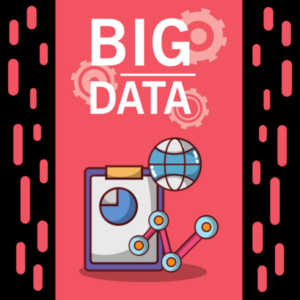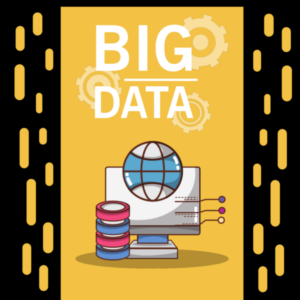Introduction
Big data is a term that describes large, complex data sets that are difficult to process using traditional data processing tools. Big data can come from a variety of sources such as social media, sensors, and other devices. Using big data can help companies make better decisions by providing insights that would otherwise be difficult to obtain.
Companies are constantly looking for ways to gain a competitive edge. By analysing large amounts of data from various sources, they can gain insights into customer behaviour and preferences, market trends, and other factors that can impact their bottom line.
Big data is often seen as the domain of large companies with vast resources and massive amounts of self-generated data. However, small, and medium businesses (SMBs) are discovering that big data can offer them huge opportunities too. In fact, in many ways, big data is made for smaller companies because of their inherent agility and ability to act swiftly on data-driven insights. Let’s explore how SMBs can harness the power of big data to their advantage.
Understanding Your Customers Better
Thanks to big data, SMBs can gain a deeper understanding of their customers. It’s no longer just about basic demographics; big data enables companies to delve into what makes their customers tick, why they buy, how they prefer to shop, why they switch brands, what their future purchasing behaviour might be, and even what motivates them to recommend a company to others. By analysing a diverse range of data sources, including traditional in-house data like sales figures and customer service logs, as well as social media interactions, browser logs, text analytics, and public datasets like census data, SMBs can build comprehensive customer profiles and improve their interactions and engagement.
Unearthing Trends and Predicting the Future
Spotting trends and monitoring behavioural patterns have become immensely valuable for small businesses in predicting market changes and anticipating shifts in demand for their products or services. In the past, trend analysis relied heavily on gut instincts, but now, big data takes the guesswork out of the equation. Social media platforms like Facebook and Twitter are rich sources of real-time data that can provide insights into consumer preferences and emerging trends. Services like Trendera, Trend Hunter, Exploding Topics or Glimpse can help businesses harness trend data to answer specific questions. Retailers can scrutinize customer behaviour both online and offline to the tiniest detail, cross-referencing it with external data like economic conditions and weather to gain a nuanced understanding of consumer purchasing patterns.
Keeping an Eye on the Competition
Understanding the competition is crucial for any business, and big data makes this task easier than ever. Companies no longer need to resort to industry gossip or pretend to be customers to gather intelligence on their competitors. Financial data is readily available, Google Trends offers valuable insights into brand and product popularity, and social media analysis reveals how often a company is mentioned and what customers are saying about it. Twitter, with its transparency, is a particularly useful platform for competitor analysis. Of course, while SMBS can gain insights into their rivals, they must also be aware that competitors can do the same, making it essential to stay updated on the latest big data technologies and uses.
Optimizing Business Operations
Big data isn’t just about customer insights; it also plays a vital role in optimizing business processes and everyday operations. By collecting and analysing data from various sources, such as machinery on a production line, sensors on delivery vehicles, and customer ordering systems, companies can make data-driven improvements and generate operational efficiencies. For manufacturing or industrial businesses, making their equipment “smart” enables real-time visibility into operations, leading to better decision-making. Retailers can optimize their stock management based on predictions generated from social media data, web search trends, and weather forecasts, ensuring they have the right products in stock at the right time. Additionally, big data analytics aids in supply chain and delivery route optimization, integrating live traffic data and sensors to track goods and delivery vehicles.
Recruiting and Managing Talent
Data-driven insights extend to human resources as well, helping businesses find the most suitable candidates, identify the best recruitment channels, and use existing employees effectively. HR-related data such as absenteeism figures, productivity data, personal development reviews, and staff satisfaction data has been collected by most businesses. However, with big data, companies can access additional data from recruitment sites, ID badge sensors, social media, and more. This wealth of information can be analysed to gain valuable insights that were previously unavailable.
Monetizing Data for Revenue Generation
Big data can even become an integral part of a business model, leading to innovative ways to generate revenue. For instance, companies like Facebook, which offers its platform for free to users, leverages the vast amount of user data it has to offer businesses access to valuable insights for a fee. Similarly, small businesses can monetize the data they generate by providing value-added services or selling data to customers or third parties. From optimizing product maintenance cycles based on sensor data to offering tailored products and services, the possibilities are endless.
Conclusion
Companies that can harness the power of big data position themselves for success by making data-driven decisions that give them a competitive edge. They can gain in depth insights into customer behaviour, identify emerging trends, outpace the competition, optimize operations, recruit, and retain top talent, and even explore new revenue streams. Every small and medium-sized business should develop a comprehensive big data strategy to not only seize the opportunities but also face the challenges presented by the global data explosion.

